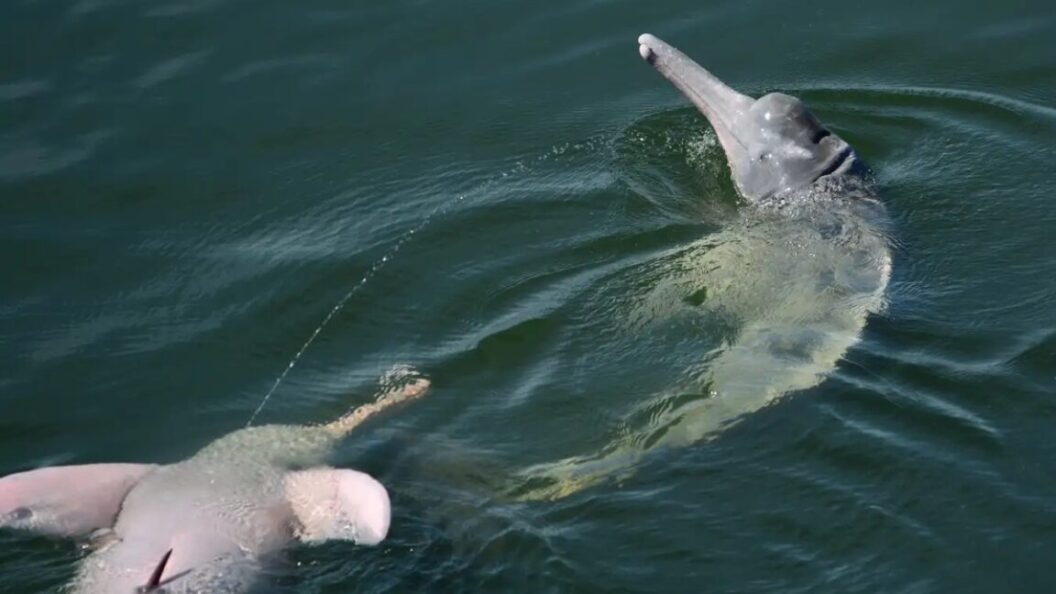Mysterious Behaviors of Amazonian River Dolphins Captured in New Study
A recent study by a team of Canadian biologists has unveiled unexpected behaviors among male Amazon river dolphins, also known as pink dolphins, challenging common perceptions and shedding light on their social interactions. While exploring the folklore that surrounds these aquatic mammals, researchers observed a unique activity that has sparked interest in the scientific community.
Folklore Meets Reality
According to Amazonian folklore, male river dolphins are said to be shapeshifters, transforming at night into attractive young men who seduce women. This myth, rooted in local culture, may have arisen due to the dolphins’ human-like genitalia—drawing parallels between them and human behavior. However, in a four-year study conducted in central Brazil, biologists failed to observe any such mythical transformation. Instead, they documented 36 instances of an unusual behavior they describe as a cetacean equivalent of a "pissing contest."
The Aerial Display of Urine
The researchers found that male dolphins would often roll onto their backs and propel streams of urine up to three feet into the air. This behavior appeared to be particularly intriguing to other male dolphins, who would exhibit excitement and chase the streams with their snouts. The study, detailed in a paper published in the journal Behavioral Processes, suggests that this behavior may not merely be for waste elimination, but could instead serve as a form of chemical sensory communication.
Co-author Claryana Araújo-Wang, a researcher from the CetAsia Research Group in Ontario, expressed surprise at the discovery, stating, “We were really shocked, as it was something we had never seen before.” Such statements reflect the novelty of these observations in the context of dolphin behavior, pointing to the rich complexity within social interactions of these creatures.
Social and Biological Significance
Historically, urine spraying is common among various animal species as a means to mark territory, fend off rivals, or communicate information regarding health and social hierarchy. In the context of the Amazon river dolphins, it is plausible that the chemical composition of the urine conveys critical information about the individual’s health, reproductive status, or social dominance. The necessity for such a behavior may highlight the competitive nature of male dolphins, particularly when vying for social bonds or mating opportunities.
Researchers also note that this behavior could provide insight into the dolphins’ social dynamics, as the male interactions around urine spraying suggest an element of playfulness and curiosity that was previously undocumented.
Controversies and Further Research
While the findings are being praised for their originality, they also raise questions and possible controversies regarding the behaviors of aquatic mammals. Some biologists may argue that anthropomorphizing animal behavior—attributing human characteristics to animal actions—can sometimes lead to misinterpretations. Further research is necessary to establish the precise meanings and implications of this behavior, including whether it is truly tied to reproductive strategies or social communication.
Conclusion: A Window into Dolphin Behavior
The study of the Amazon river dolphins offers a fascinating glimpse into the complexity of their social behavior. The revelation of urine-spraying as a potential form of communication not only enhances our understanding of these unique creatures but also encourages a reevaluation of the assumptions made about non-human interactions.
As conservationists continue to emphasize the importance of protecting habitats for these dolphins, understanding their behaviors could play a crucial role in efforts to ensure their survival and promote awareness about the ecological significance of the Amazon river’s ecosystem. This research serves as a reminder of the mysteries that persist within the natural world and the ongoing need for scientific inquiry into animal behavior.









